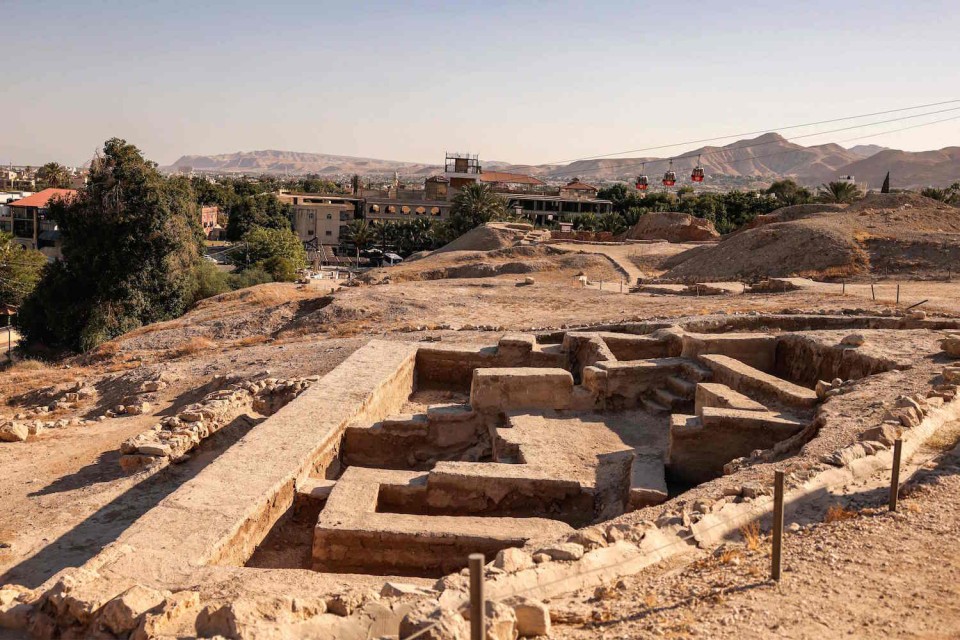
JERICHO, Palestinian Territories, Sept 17, 2023 (AFP) – UNESCO inscribed the prehistoric site of Tell al-Sultan, near the Palestinian city of Jericho in the occupied West Bank, on its World Heritage List Sunday, in a move criticised by Israel.
Tell al-Sultan, which predates Egypt’s pyramids, is an oval-shaped tell, or mound, in the Jordan Valley, and contains the prehistoric deposits of human activity.
The decision by the United Nations cultural organisation, which it posted on X, formerly Twitter, was taken at its 45th world heritage committee meeting held in Riyadh.
“The property proposed for nomination is the prehistoric archaeological site of Tell al-Sultan, located outside the antique site of Jericho,” UNESCO’s assistant director general, Ernesto Ottone, said at the session.
The site was inscribed following a three-year candidacy “during which no state party raised any objections”, said a diplomat, speaking on condition of anonymity as he was not authorised to speak to the media.
“There are no Jewish remains found at the (Tell al-Sultan) site. It’s a place of pre-historic remains,” the diplomat told AFP.
Israel denounced the decision.
“The foreign ministry considers today’s decision another sign of the cynical use the Palestinians are making of UNESCO and the organisation’s politicisation,” a ministry statement said.
“Israel will act with its many friends in the organisation to change the flawed decisions made.”
Israel quit the UN organisation in 2019 over accusations that it fosters an anti-Israel bias, but did send a delegation to this year’s meeting in Saudi Arabia.
The Palestinian Authority, acknowledged by the United Nations as a non-member observer state, welcomed the listing of Tell al-Sultan site.
Palestinian president Mahmud Abbas said he considered the decision “a matter of great importance and evidence of the authenticity and history of the Palestinian people”.
He vowed that the Palestinian authorities would “continue to preserve this unique site for all humanity”, a statement from his office said.
– ‘Diverse Palestinian heritage’ –
UNESCO’s listing shows that the site is “an integral part of the diverse Palestinian heritage of exceptional human value”, Palestinian tourism minister Rula Maayah, who was at the meeting in Riyadh, said in a statement.
Given Tell al-Sultan’s “importance as the oldest fortified city in the world… it deserves to be a World Heritage Site”, she said.
“A permanent settlement had emerged here by the 9th to 8th millennium BC due to the fertile soil of the oasis and easy access to water,” UNESCO said on its website.
It said the “skulls and statues found on the site” testify to cultic practices among the neolithic population there, while the early Bronze Age archaeological material shows signs of urban planning.
“Vestiges from the middle bronze age reveal the presence of a large canaanite city-state occupied by a socially complex population,” UNESCO added.
The site has been under excavation for more than a century and is billed as the oldest continuously inhabited settlement on the planet, Palestinian official Wafa news agency reported.
It is the fourth Palestinian site to be listed on UNESCO’s world heritage list, alongside the Church of the Nativity and the Old City of Hebron.
Israel has occupied the West Bank — now home to some three million Palestinians — since the 1967 Six-Day War, when it also seized the Gaza Strip, the densely populated coastal enclave from which it withdrew in 2005.
The Palestinians want both territories for their future state, along with annexed east Jerusalem as its capital.
Jericho is one of the oldest inhabited cities on the planet and a major tourist destination in the Palestinian territories.
UNESCO also urged that other archaeological sites in Jericho be protected.
“The other archaeological sites located in Jericho, covering among other Jewish and Christian heritage, also have important historical interest and deserve to be preserved as well,” Ottone said.
Archaeology is a highly political subject in Israel and the Palestinian territories, and discoveries have been used to justify territorial claims.








